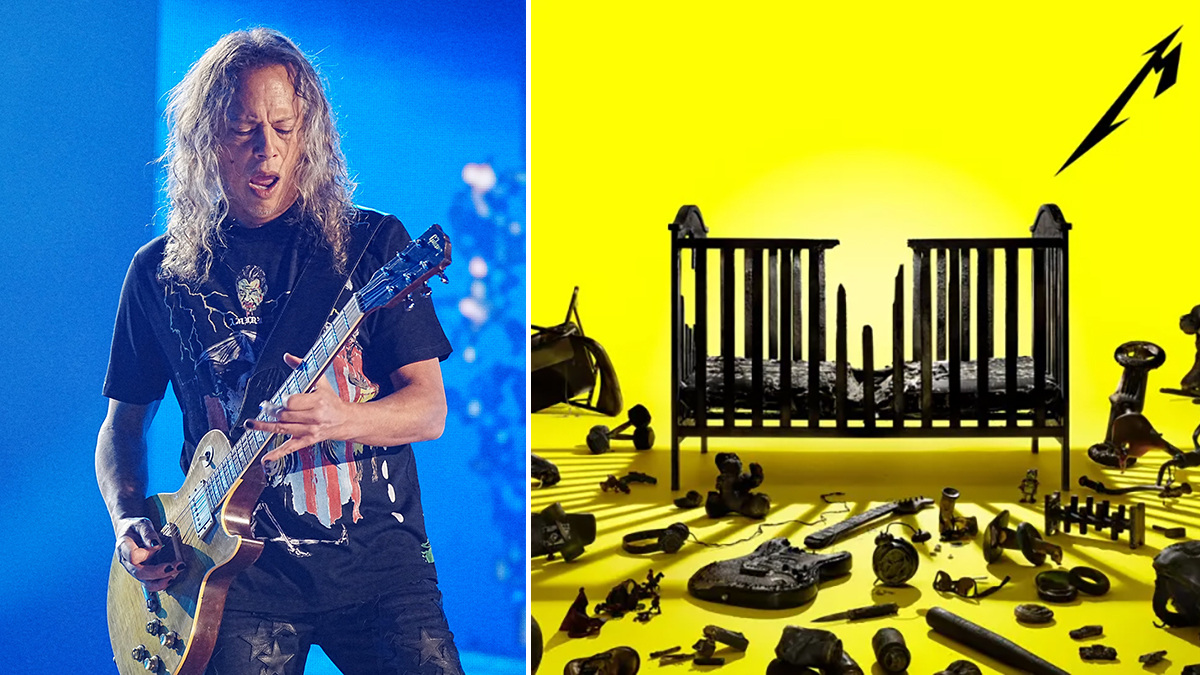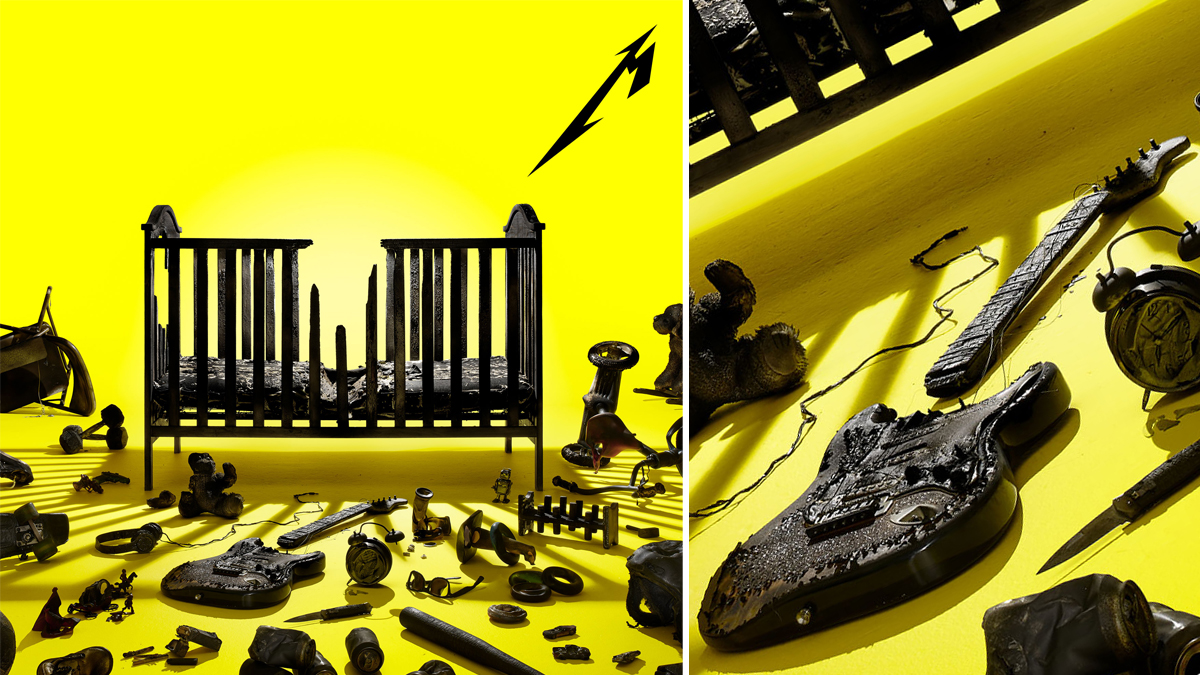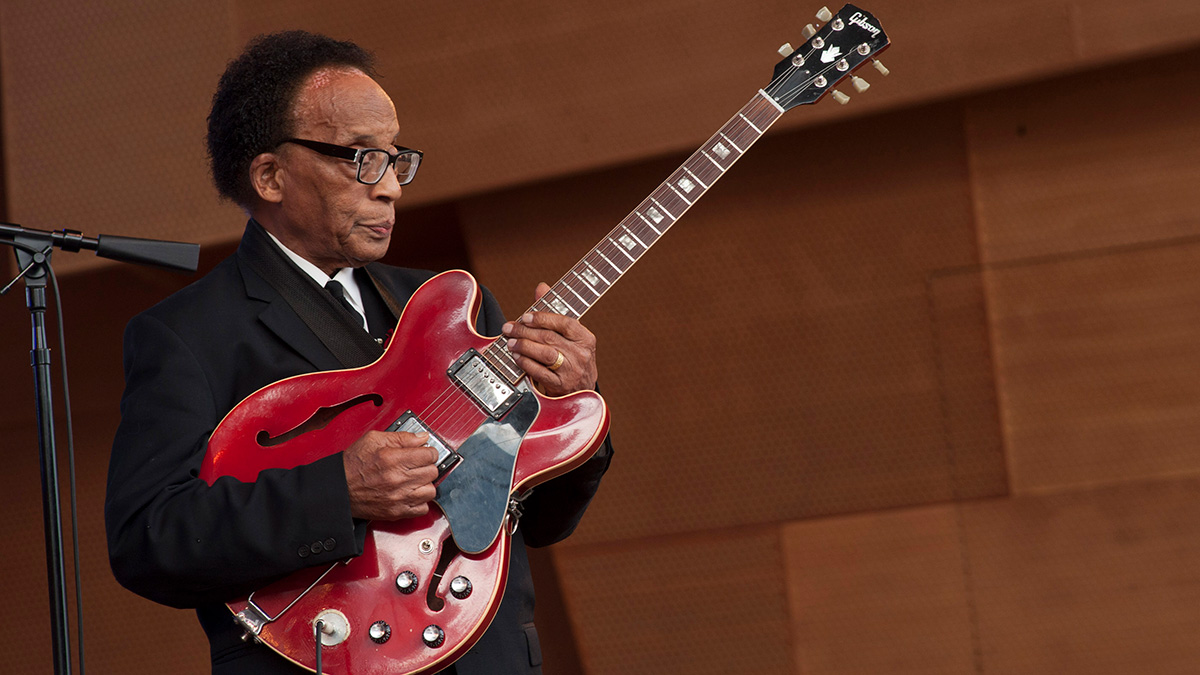
Metallica’s long-awaited new album, 72 Seasons, finally arrived in its entirety last week, following a four-month wait that began when the heavy metal icons surprise-dropped its lead single and eye-grabbing artwork.
The 72 Seasons cover was particularly puzzling for electric guitar fans, many of whom were left with the same question: what was that charred and broken guitar that could be seen lying on the floor?
Theories behind the six-string’s importance and provenance were promptly thrown around, with the evidence – in particular, the headstock – pointing towards it being a Fernandes LE-1 Stratocaster copy from the late ‘80s.
It was an argument that became all the more tantalizing when Hammett’s own involvement with the Fernandes brand was taken into account, with the Metallica man having previously played a Fernandes FST-13 – nicknamed Edna – in the early ‘80s.
Many had already come to terms with the fact we may never find out the truth behind the guitar, but now the Metallica maestro has addressed speculation about the mysterious 72 Seasons six-string head on.

So, what’s the deal? Is it indeed a Fernandes LE-1, or another Fernandes variety, used to pay homage to both Hammett’s roots and his beloved Edna? Well... no, not exactly.
In the latest issue of Guitar World, the wah pedal master was asked about the burned 72 Seasons guitar, and his response made all of the above theories completely obsolete. In fact, it turns out he was just as curious about the guitar himself.
Get The Pick Newsletter
All the latest guitar news, interviews, lessons, reviews, deals and more, direct to your inbox!
“It was some $200 guitar, which I admit doesn’t really answer your question,” Hammett revealed. “The photographer who took the picture isn’t a guitar player. He just said it was some cheap instrument he found and then burned. I asked, ‘Do you remember what the word was on the headstock?’ and he said, ‘Oh, no!’
“If people have identified it as a Fernandes, that’s great, because I’d actually like to know, too!” he went on. “People like you ask me these sorts of questions, so I need to have a decent answer for them. But it wasn’t meant to be any sort of statement or anything.
“There’s no fuckin’ conspiracy or whatever. It’s plainly and only a burnt guitar that ended up being part of the artistic concept for the album… that’s it.”
Though he had just shot down four months of theories, Hammett confessed his understanding for the fans who had been puzzling over the 72 Seasons cover – and even said, “I’m guilty of all that kind of stuff myself.”
“I really understand,” he admitted. “For a long time I couldn’t figure out what string gauges Jimi Hendrix used until [producer] Bob Rock found out and sent that information over to me. It was a mixture of two or three sets that they made back in the day.
“And when I found out, I felt like a geek, you know? I’m just as guilty of collecting the same geeky and nerdy info that exists out there.”
Well, there you have it. Probably not the answer we were hoping for, but at least Hammett has put the conversation to bed once and for all. For our two cents, we’re still convinced it’s a Fernandes LE-1. If only the photographer made a note of the brand before he burned it to a crisp.
To read the full interview with Kirk Hammett, head over to Magazines Direct to pick up the latest copy of Guitar World.
This is the latest in a string of revelations from the Metallica guitarist on this press cycle. Hammett has also revealed the secret weapon behind his guitar tone, why he's bored of playing the Master of Puppets solo, and hit back at his solo trolls, reasoning, “My friends down the street could probably play a better solo than Lux Æterna – but what’s the point?”

Matt is the GuitarWorld.com News Editor. He has a Masters in the guitar, a degree in history, and has spent the last 16 years playing everything from blues and jazz to indie and pop. When he’s not combining his passion for writing and music during his day job, Matt records for a number of UK-based bands and songwriters as a session musician.










